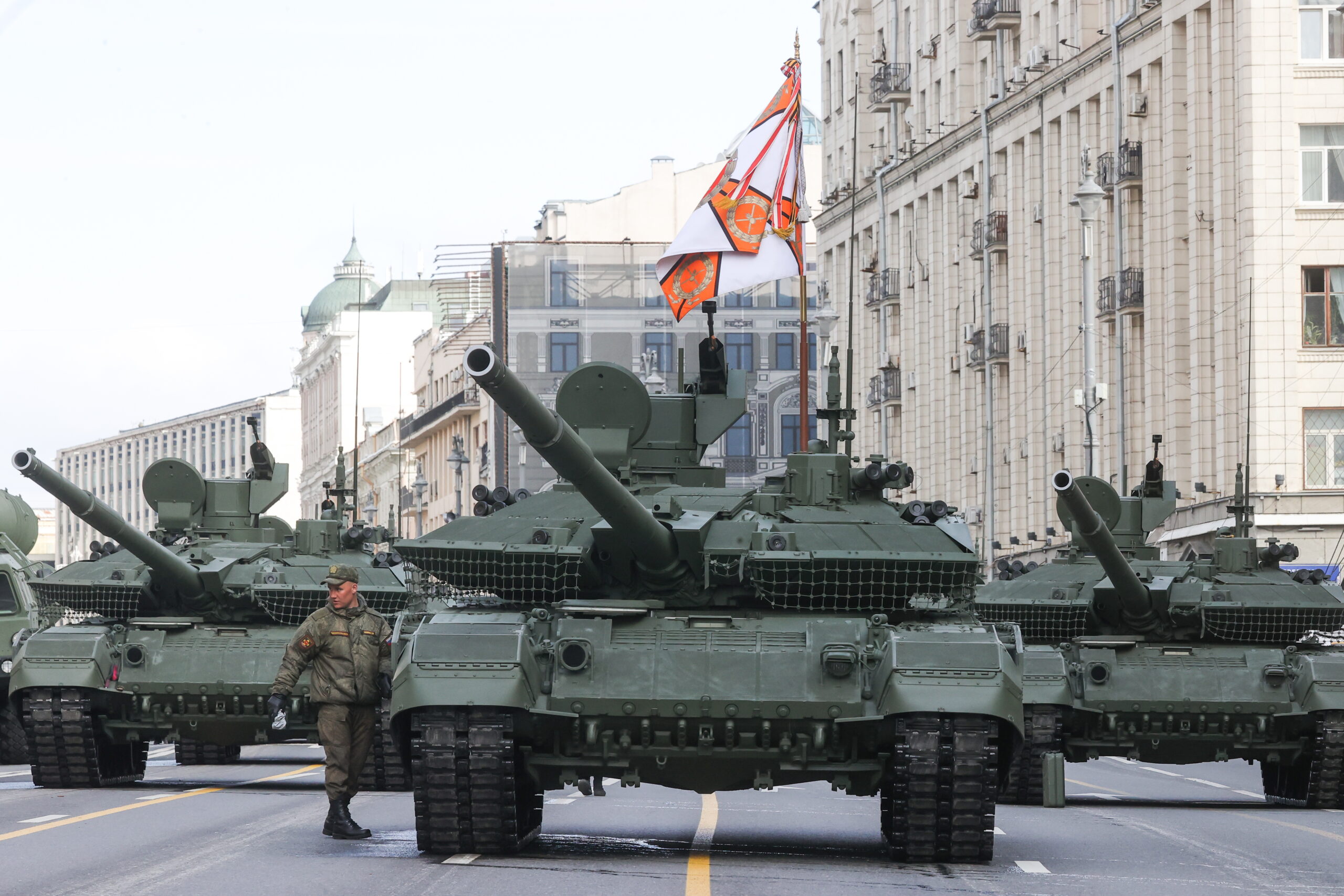Since the onset of Russia’s Ukraine invasion, prime minister Mikhail Mishustin’s team and the Presidential administration have been relatively subdued in their efforts to firefight against the economic fallout of punitive sanctions. But behind the scenes the current crisis is prompting a fight over the material and ideological orientation of Russia’s economic policy.
The Presidential Administration is proposing a naming of all deputies tasked with handling «informational-political work» in each government institution. They are meant to communicate the regime’s political line and monitor the emotional state and loyalty of staffs accordingly. These efforts build on — and counter — ongoing work from prime minister Mikhail Mishustin to «foolproof» Putinism through the creation of a central coordination center within the government, alongside efforts to improve the quality of existing state institutions. The appearance of neo-Soviet approaches to strengthening executive control over state organs points to a foundational problem: the regime can scarcely mobilize the economy effectively, never mind debates about whether full military mobilization will take place.
The Import Crisis
Central Bank governor Elvira Nabiullina warned the Duma that as of 2Q and 3Q this year, the economy was entering a period of «structural transformation» as businesses exhausted existing stockpiles of necessary inputs and with goods now far more difficult to import. In her April 18 address, she took pains to note that high levels of inflation this year would be a result of constraints on supply, not demand. Skyrocketing prices for basic goods would be the logical outcome for a functioning market. Prices ‘work’ in this instance if enough demand can be destroyed or else high prices trigger enough investment into supply to offset the loss of imports.
The current shock to imports far exceeds anything comparable among contemporary economies given Russia’s relative level of income per capita and import dependence on a huge range of consumer goods and technological inputs for its industries. As Branko Milanovic has noted, the novelty of the shock lies in the degree to which Russia will be forced to substitute imports of technologically simple production instead of focusing on substituting higher-end products to drive technological modernization. Doing so in conditions where real incomes are falling dramatically and the exchange value of the ruble is decoupled from its real purchasing power domestically requires economic transformation. To use the Central Bank’s terminology, the economy is set to undergo «reverse» industrialization.
There are countless examples where import dependence intersects with supply chain disruptions. Russian bakers reportedly rely on European equipment for as much as 80−90% of their needs in major cities and 50−70% across the regions. EU sanctions have choked the flow of imports, forcing firms to find alternatives and risking bread shortages as equipment breaks down and stockpiles of spare parts are exhausted. In March, automotive production was down a whopping 70.5% year-on-year as European suppliers ceased exports and firms elsewhere assess the risks of continued sales and operations in Russia, though some production is coming back as companies adjust. EU bans on exports of ingredients for varieties of sausages pose huge supply risks domestically since EU imports accounted for 73% of total casings production in 2021. 14 of the country’s 20 largest international shipping firms for the trade of goods and commodity containers have pulled out of the market and it’s forecast that seaborne throughput at Russia’s northwestern ports will fall as much as 95% in May as St. Petersburg’s port faces de facto embargos and trade via the Black Sea is disrupted. Freight costs have risen as much as 2.5−4 times their pre-war level with these shifts in transit routes. Small business importers will take a large hit; larger manufacturers and the defense sector and military compete over suddenly scarcer supplies.
Even with some rebound in industrial activity as supply chains adjust, the Russian economy is currently incapable of producing some key imported components. These go far beyond semiconductors and otherwise ‘complex’ technological inputs. China (or re-exports bought via Kazakhstan) cannot make up the scale of the shortfall or disruption readily. Nor is there evidence that either government is particularly keen on doing so. What can’t be imported will have to be produced domestically with a shrinking labor force, reduced flow of migrant labor, expensive costs of capital, high rates of inflation, and weakening domestic demand. Political institutions will have to mobilize businesses and agencies to soften the adjustment.
Varieties of State Capacity
Differing states have differing capacities to provide goods and services, administer and implement policies and programs, and otherwise function based on their path dependencies. The strongest economic ‘islands of competence’ among Russia’s economic institutions today are macroeconomic and financial because of the political imperatives to centralize political, fiscal, and financial power in Moscow. Their governing institutional logic is the pursuit of stability and the maintenance and enforcement of stagnation. Their comparative institutional strength is reflected by the comparative success the Central Bank has had instituting capital controls to stabilize the ruble’s external exchange rate, discipline exporters into dumping their foreign currency for rubles, and coordinating with the Ministry of Finance to avoid triggering additional domestic inflation through an increasingly untenable fiscal expansion.
Unfortunately, the Central Bank and the Ministry of Finance lack any tools to address the growing import crisis. The Central Bank can print money. It can’t print semiconductors or car components. The Ministry of Finance can waive the budget rule and avoid deficit spending in response to the current shock. It can’t reopen McDonalds. Neither are well positioned to deal with risks facing the exporters propping up the ruble and ‘stability’. Oil production declined 8.7% in April vs. March, with Rosneft already reporting a 20% production decline. More is on the way and EU member states are planning reductions in Russian energy imports.
The structure of economic institutions in Russia recreates the same kind of vertical of power that permeates governance from the Kremlin and Mishustin’s staff. Fiscal policy and macroeconomic policy tools are blunt instruments exerting downward pressure, imposing hard spending constraints on lower levels of government and rationing access to credit via the banking sector. They are effective at subordinating lower levels of government and limiting the scope for graft where possible, not coordinating purchases of necessary inputs, planning to relieve supply chain bottlenecks, and directing investment paired with demand-side planning for technological inputs. Import substitution has been a regime priority since 2014, yet in the last 8 years relatively little has been done to build up capacities to coordinate investment, manage supply chains, allocate imported inputs, or else build things. Policy has focused on fiscal instruments — increased subsidies for industries — and control over the terms and conditions of investment and business contracts and tax regimes.
Who’s afraid of central planning?
As import shortages intensify, Russian economic institutions will have to adapt. The Kremlin’s newfound concerns about loyalty among federal economic ministries comes at a time when Russia’s business community has lost any space to assert its interests in relation to state policy. Nornickel CEO Vladimir Potanin’s acquisition of Oleg Tinkov’s shares of Tinkoff Bank after he spoke out against the invasion captures the current state of affairs perfectly. Loyalty is rewarded and disloyalty punished.
The problem for the regime’s isn’t captured by the dilemma of loyalty vs. competence so much as a crisis of vertical vs. horizontal governance. The evolving system of anti-inflation policies that began to take shape in December 2020 has largely relied on market mechanisms thus far. By leaving it to export duties, the occasional export ban, and handshake agreements with fertilizer producers, wholesalers, and food retail chains, these solutions reflect existing governing capacities that are vertically organized. The Presidential Administration and Mishustin’s staff can broker agreements that don’t require too much in the way of direct administrative capacity aside from surveillance. Prices are the primary tool that ‘rations’ supply. It’s incumbent upon regional governments and businesses to come forward with concerns when these mechanisms fail.
Expansive central planning and coordination of some kind is needed to save markets in Russia faced with this scale of industry disruption. Mishustin may be spearheading an effort to centralize data streams and head off political problems before they fester. His work is a far cry from building a planning apparatus to predict and allocate resources to businesses as well as command regional counterparts to build factories, ration inputs, and control inter-sectoral flows of goods and services.
Only an institutional reinvention can salvage the situation. Any such reinvention would shatter the system that controls and redistributes rents. But anyone pursuing such a reinvention would risk weakening the power of the Kremlin by building an institutional system by skipping out the fiscal and macroeconomic apparatus disciplining the rest of the political-economic system. There are surely countless ambitious political entrepreneurs, bureaucrats, and technocrats left in Russia. None are influential or stupid enough to take that risk.










